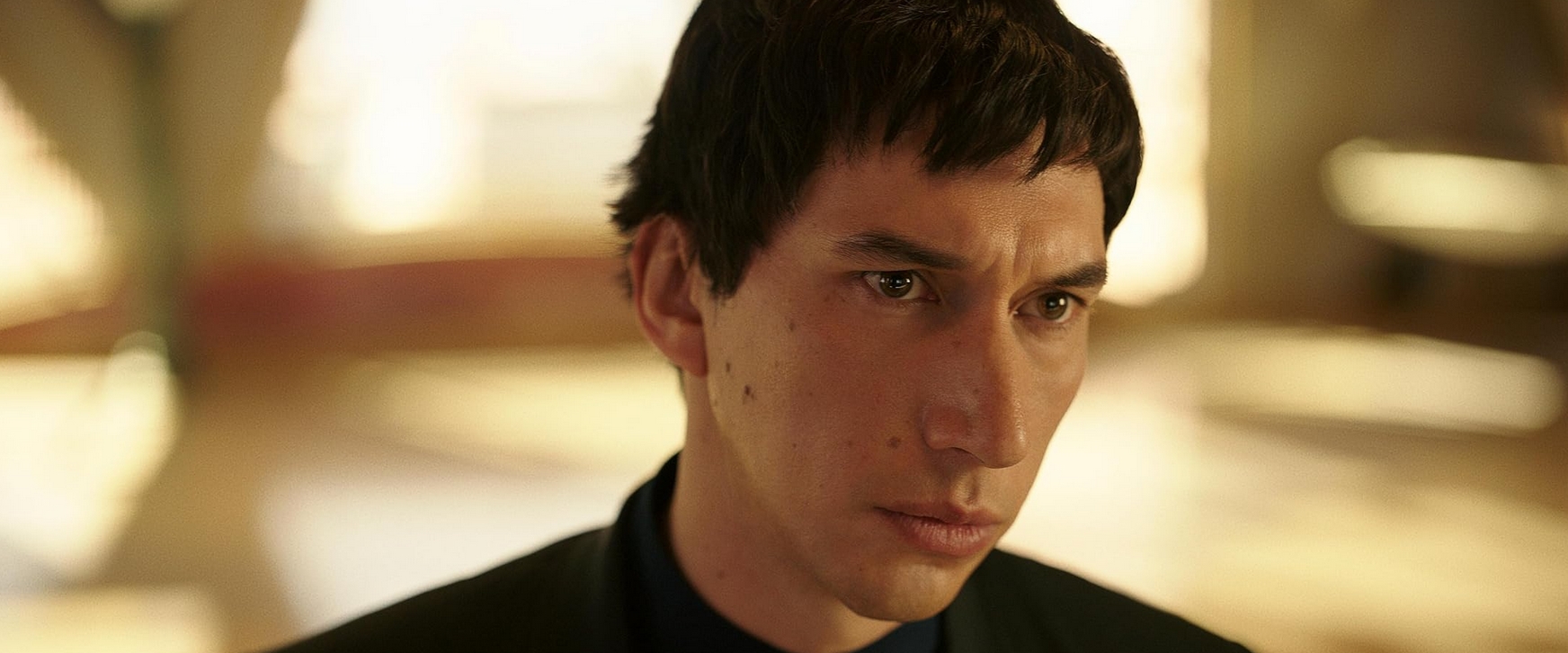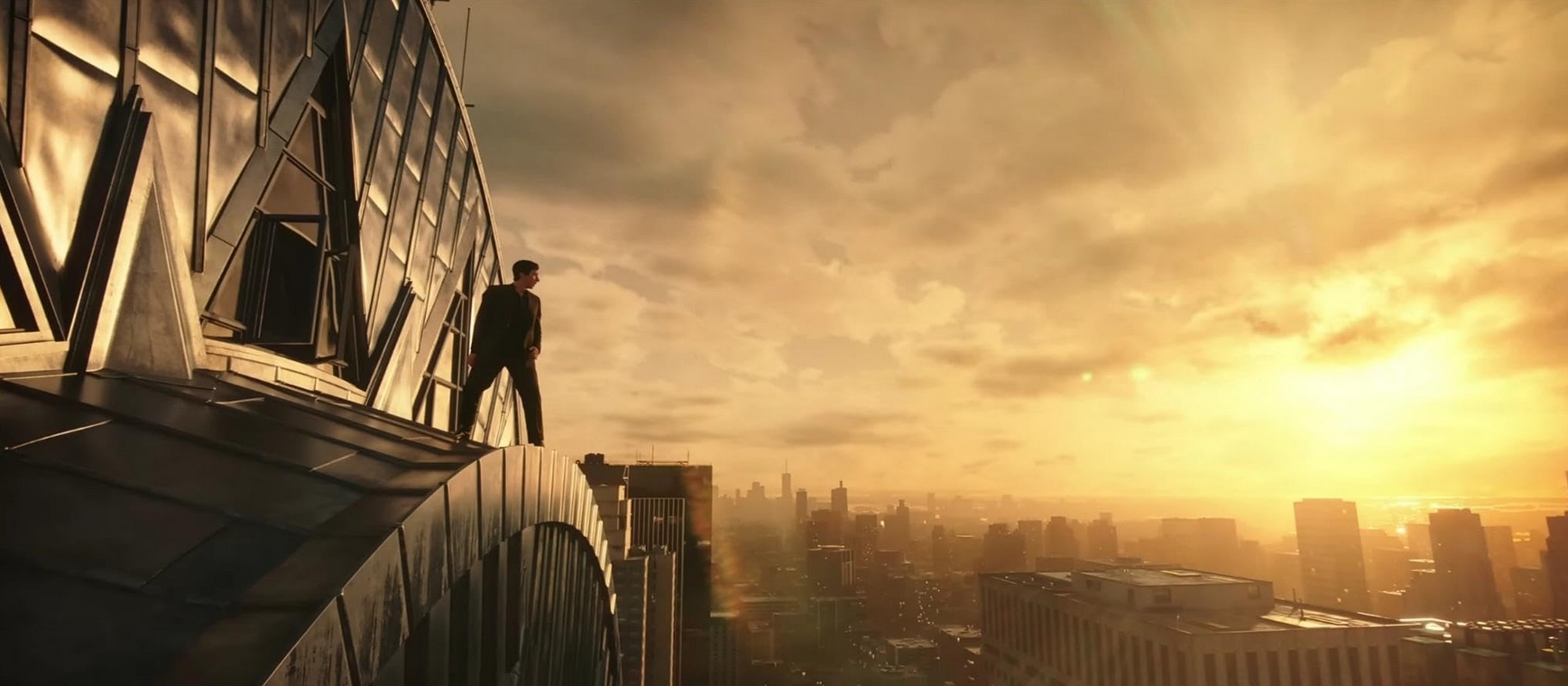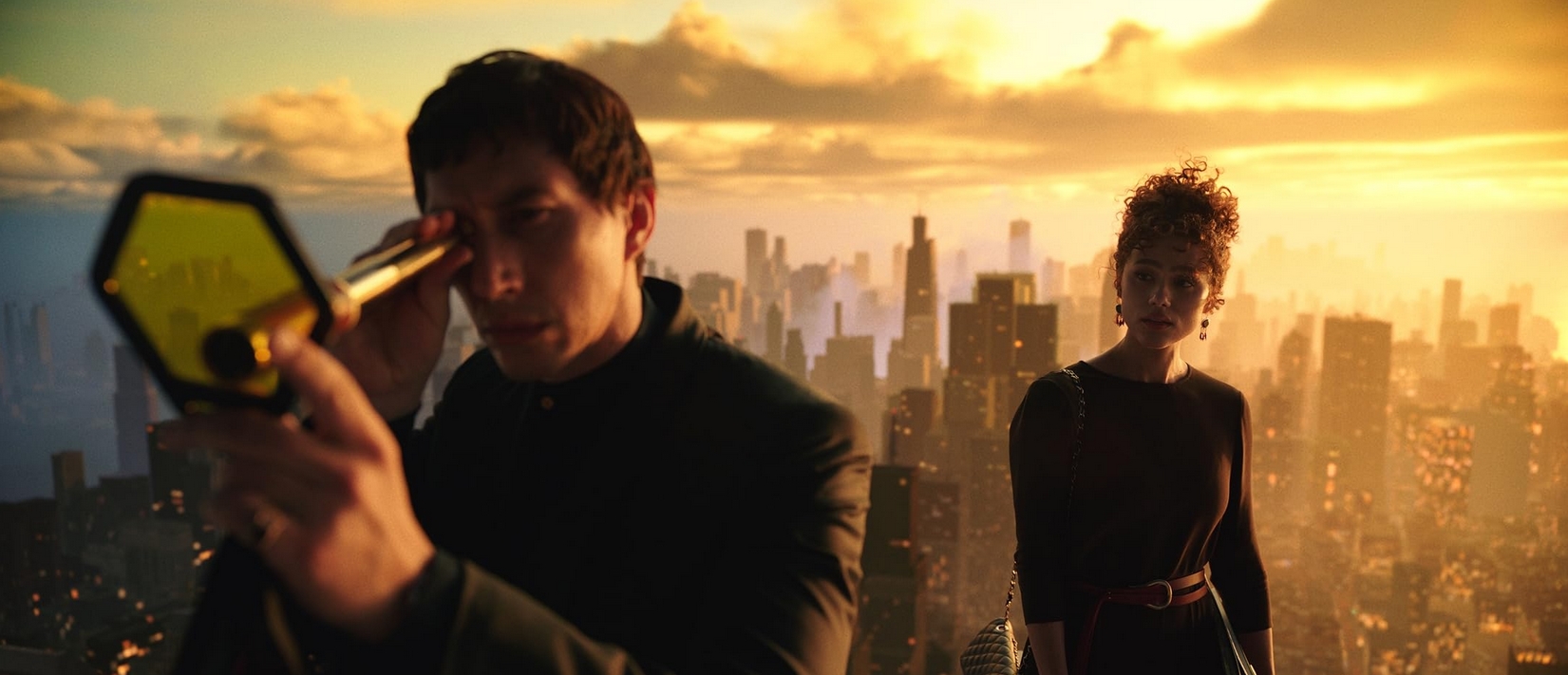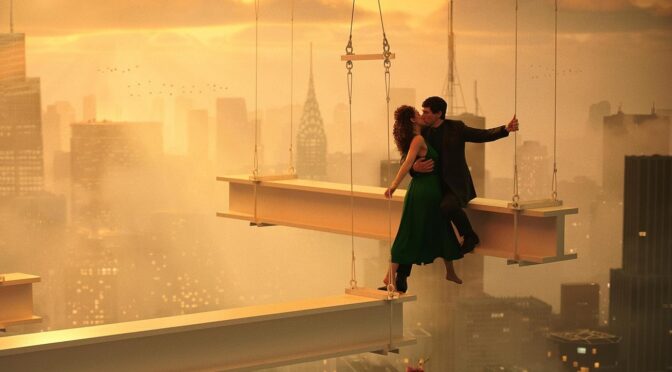In an era of cinema characterised by the erosion of the “mid-budget” feature, it’s unusual to find filmmaking at a grand scale taking significant risks. For better or worse, feature films with budgets in excess of $100M tend to be inherently conservative on multiple levels. MEGALOPOLIS is a welcome exception to some of these tendencies. It has many flaws, but a constricted and tame approach to its themes is not one of them. The film’s proposed worldview may be naive, sometimes presented immaturely, and have enough minor embellishments and subplots in the narrative to border on the incoherent, but their expression certainly doesn’t lack sincerity and optimism.
Francis Ford Coppola adopts some of the iconography and language of Ancient Rome to juxtapose his script’s ideas around the direction of American society (depicted here in New Rome, a clear New York analogue) with that of the decline of the Roman Empire. Cesar Catalina (Adam Driver), designing from his Design Authority headquarters in the Chrysler building, seeks to establish a new community. It will be a utopia he calls Megalopolis, set in the city’s heart, constructed with the deus ex machina of “megalon”: a semi-organic wonder material for which he earned a Nobel Prize. He is opposed by the city’s mayor, Cicero (Giancarlo Esposito), who favours a more restrained approach focused on the city’s immediate problems (which are slightly opaque in the script). Also embellishing the byzantine network of relationships in the film are Cesar’s love interests of reporter Platinum Wow (Aubrey Plaza) and the mayor’s daughter, Julia (Nathalie Emmanuel); wealthy banker Hamilton Crassus III (Jon Voight); and also Clodio (Shia LaBeouf), a jealous relation of Cesar and wannabe populist demagogue.
Cesar and Cicero’s detractors would characterise them as a naive charlatan and a status quo scaremonger, respectively, where they see themselves as aspirational and pragmatic. The film takes time to question whether Cesar is visionary to the point of his being blind. He thinks (and the script mostly agrees) that he embodies the oft-stated proverb (attributed apocryphally to ancient Greeks) that “a society grows great when old men plant trees in whose shade they shall never sit.” He wishes to create this society and sees himself as the man planting a tree, even if he is oblivious to the forest dying around him as he carefully tends to his single spruce. However, the film posits that society has lost its ability to dream of a grander future. Petty political dealings and the immediacy of personal and populist agendas hamstring the visionaries. Cesar’s ability to stop time (yes, this is another bizarre presence in the script) allows him to sit outside its passage, contemplating more than the minutiae of the day’s seemingly petty squabbles.

“[Cesar thinks] that “a society grows great when old men plant trees in whose shade they shall never sit.” He wishes to create this society and sees himself as the man planting a tree, even if he is oblivious to the forest dying around him as he carefully tends to his single spruce.”
The unconstrained nature of MEGALOPOLIS is the film’s Achilles heel but also the source of its most interesting aspects. There are more elements to juggle here than Coppola’s script can handle with any level of dexterity. The mixture is so dense with references and analogues – classical literature, figures from antiquity, Shakespeare, Pygmalion, fascist leaders of the 20th century, and more – it nearly congeals. However, the idiosyncratic performances he garners and his characters’ lofty visions and language are nothing if not engaging. MEGALOPOLIS wrestles with how art – for it sees Cesar as an artist first and foremost – can inspire society and visions for the future. Is the here-and-now important? To whom does the future belong? All of this is visualised in a way that swings wildly between idyllic utopia and poorly rendered promotional material for a new Saudi Arabian megaproject.

“All of this is visualised in a way that swings wildly between idyllic utopia and poorly rendered promotional material for a new Saudi Arabian megaproject.”
Intriguing ideas are not well explored. Catalina’s ability to stop time invites us to consider whether collectivism and building for a better world should be regarded as across time, not just the metaphorical space of societal class. If artists are time travellers, and art is a time machine, to when do they have any responsibility? How much should we try to solve the problems of now at the expense of the future, and what role does history play? Like any individual strand, there is little room for these ideas to breathe.
Through Cesar, the film seems to implore us that a grander vision is still important. Still, as the utopia is established (when a Soviet satellite named Carthage hits the city and provides the opening for Cesar to break ground on his new society), the proletariat of New Rome is still clinging to wire fences with dirt on their faces and little in their stomachs. Whether this is by the design of Coppola’s script or a casualty of it – squeezed out by that thematic and intertextual density – is open to question. Coppola’s Catalina and Cicero are presented inversely to a typical reading of the Roman analogues: Catiline as a threat and Marcus Tullius Cicero as a hero. The danger of Driver’s Catalina is presented as disruptive to the status quo rather than insurrectionary. It’s unclear whether MEGALOPOLIS minimises the impact of Catalina’s work on lower levels of society or simply introduces the concept of ambiguity when interpreting history (or visions for the future) through a biased lens. Although Coppola’s tone is optimistic, the future of the citizens of New Rome is still primarily determined by the machinations of rich, privileged men.

“Catalina’s ability to stop time invites us to consider whether collectivism and building for a better world should be regarded as across time, not just the metaphorical space of societal class. Like any individual strand, there is little room for [this idea] to breathe.”
The dense mixture presented by Coppola has some intelligent themes but often expresses them with the baggy inelegance of self-indulgence. Catalina implores whether we should “just accept this endless conflict” or put aside differences to build a better future, but there is no evidence such collaboration is possible or preferable. Clodio stands atop a tree trunk in the shape of a swastika before his story hurtles towards some obvious Mussolini parallels. Multiple characters quote and misquote Marcus Aurelius.
MEGALOPOLIS positions itself with the subtitle “A Fable”, and amidst all the intertextuality with the art of the past, there is also a metatextual observation here. Catalina looks to provide a vision for the future from which everyone can benefit but drives it with his discoveries, his preoccupations, and his family wealth. He orates atop his gilded creation while people gaze from below in the rust and dirt. Coppola’s MEGALOPOLIS calls for this “great debate about the future” lest the modern empire fall into ruin, but is similarly the wild and flamboyant ramblings of one man a degree removed from those to whom he preaches.

